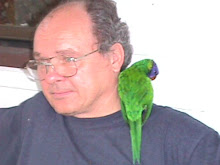
Anyone can type in a list of species recorded at any one particular birding spot. There's no real talent in that. We all, however, in one form or another, do it. My list appears below.
Of more interest to Fay and I were the notable changes since 1999 [in my case] and even 2005 [in Fay's case].
We are aware of the decline in Tree Sparrow numbers but where are the House Sparrows? Have they also suffered a decimation? We came across a small handful during our two towpath strolls but back in 1999 they were profuse.
Similarly, while strolling through Rugeley's Market Square, we noted the absence of Rock Dove [Feral Pigeon] which once literally infested the old Town Hall clock tower. We eventually found a couple skulking down by the stream at Brook Square.
Where are the garden Blackbirds? The Starlings?
And when did WoodPigeon become so prolific an urban creature? Indeed, I've seen more Jackdaws in town than I can ever remember in Rugeley in bygone days.
Of course we haven't really started any serious birding yet, we're still at that meeting kith and kin stage of the trip. Nevertheless we have managed to "sneak" out a couple of times to do a little, mostly early morning when others around us appear to be still snugly wrapped up in bed- my sisters have already raised an eyebrow or two at my continuing habit of being up and about by 0400 hours!
The Trent & Mersey Canal is a mere stone's throw away; we enter at Bridge 65 [by the Mossley Tavern] and then either walk up towards Love Lane [next to the old tannery] or down to Bridge 64. Either way, we return via the road.
Yesterday, Sunday 5 September, because of a last-minute change to the family visiting schedule, we managed a few minutes at Blithfield. There were three birders at the Admaston end of the bridge but as I guessed they'd be intent on "ticking" the reported Osprey [we have a RBA rented for the duration] I decided to drive on to the other end.
Cold, overcast and dull but the Osprey duly put in an appearance and a little later, when I looked over, those three birders had disappeared.
There didn't seem much else on offer: Great Black-backed Gull, a solitary Mute Swan, Greylag Goose, in various shades of hybridization, Cormorant, Swallow and somewhere behind us, Woodpigeon.
We cut our losses and headed to Brocton Pool, which may not been its official name but is the name Fay and I have known it by since back in the 1970s. It immediately brought back poignant memories. On a previous visit here [c. mid-1990s] the resident in the end house first notified us of the major decline in the British population of Tree Sparrows. We can still recall, during a later visit to Norfolk, when a small group of local birders [we had hosted them on their last trip to Australia] swore us to secracy and surreptitiously guided us along a narrow path leading to a bird hide. With finger to lips Chris indicated the need for absolute silence. When we looked out both Fay and I were gobsmacked to find ourselves looking at a humble Tree Sparrow.
Back in our halycon Staffordshire days, Tree Sparrow was a common woodland species and certainly never anything worth writing home about. Vestiges of the American Passenger Pigeon?
Brocton provided us with a few gems, capped by magic views of a Treecreeper. We also added Nuthatch [seen earlier at Leighton Moss, Lancashire] to our Staffordshire List. Other birds included: Canada Goose, Tufted Duck, Coot, Chiffchaff, Great Tit and, one of my particular all-time favourites, Long-tailed Tit.
And that's it to date.
Trip List: 35
Staffordshire List: 29
PS In an earlier blog I inadvertently gave the wrong URL for my propsed South Burnett blogspot. It should read:
www.birdingsouthburnett.blogspot.com

No comments:
Post a Comment